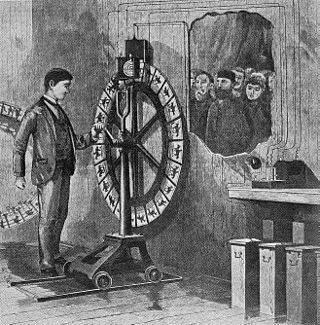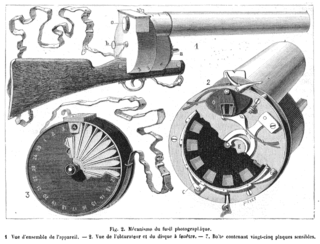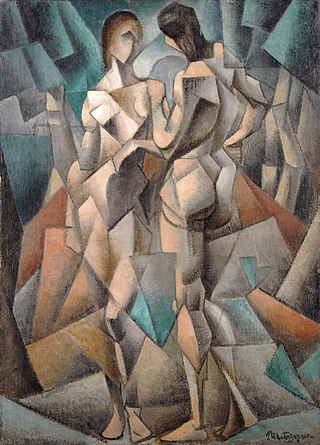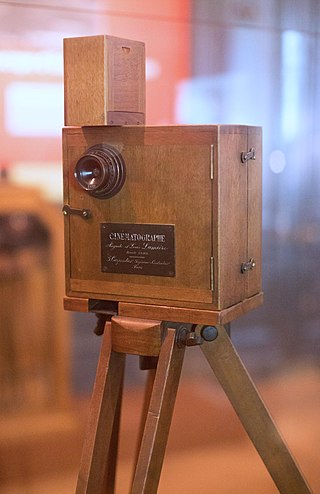Related Research Articles

Eadweard Muybridge was an English photographer known for his pioneering work in photographic studies of motion, and early work in motion-picture projection.

Charles-Émile Reynaud was a French inventor, responsible for the praxinoscope and was responsible for the first projected animated films. His Pantomimes Lumineuses premiered on 28 October 1892 in Paris. His Théâtre Optique film system, patented in 1888, is also notable as the first known instance of film perforations being used. The performances predated Auguste and Louis Lumière's first paid public screening of the cinematographe on 26 December 1895, often seen as the birth of cinema.
The following is an overview of the events of 1888 in film, including a list of films released and notable births.

Ottomar Anschütz was a German inventor, photographer, and chronophotographer.

The Elektrische Schnellseher or Electrotachyscope was an early motion picture system developed by chronophotographer Ottomar Anschütz between 1886 and 1894. He made at least seven different versions of the machine, including a projector, a peep-box viewer and several versions with illuminated glass photographs on a rotating wheel viewed on a 12.5 cm (4.9 in) wide milk glass screen by up to seven people at the same time.

Étienne-Jules Marey was a French scientist, physiologist and chronophotographer.

Chronophotography is a photographic technique from the Victorian era which captures a number of phases of movements. The best known chronophotography works were mostly intended for the scientific study of locomotion, to discover practical information for animal handlers and/or as reference material for artists. Although many results were not intended to be exhibited as moving pictures, there is much overlap with the more or less simultaneous quest to register and exhibit photographic motion pictures.

Precursors of film are concepts and devices that have much in common with the later art and techniques of cinema.
The decade of the 1880s in film involved significant events.

The chronophotographic gun is one of the ancestors of the movie camera. It was invented in 1882 by Étienne-Jules Marey, a French scientist and chronophotographer. It could shoot 12 images per second and it was the first invention to capture moving images on the same chronomatographic plate using a metal shutter.

The Horse in Motion is a series of cabinet cards by Eadweard Muybridge, including six cards that each show a sequential series of six to twelve "automatic electro-photographs" depicting the movement of a horse. Muybridge shot the photographs in June 1878. An additional card reprinted the single image of the horse "Occident" trotting at high speed, which had previously been published by Muybridge in 1877.

Two Nudes is an early Cubist painting by the French artist and theorist Jean Metzinger. The work was exhibited at the first Cubist manifestation, in Room 41 of the 1911 Salon des Indépendants, Paris. At this exhibition the Cubist movement was effectively launched before the general public by five artists: Metzinger, Gleizes, Le Fauconnier, Delaunay and Léger. This was the first exhibition during which artists, writers, critics and the public at large encountered and spoke about Cubism. The result of the group show is a succès de scandale.

The history of film technology traces the development of techniques for the recording, construction and presentation of motion pictures. When the film medium came about in the 19th century, there already was a centuries old tradition of screening moving images through shadow play and the magic lantern that were very popular with audiences in many parts of the world. Especially the magic lantern influenced much of the projection technology, exhibition practices and cultural implementation of film. Between 1825 and 1840, the relevant technologies of stroboscopic animation, photography and stereoscopy were introduced. For much of the rest of the century, many engineers and inventors tried to combine all these new technologies and the much older technique of projection to create a complete illusion or a complete documentation of reality. Colour photography was usually included in these ambitions and the introduction of the phonograph in 1877 seemed to promise the addition of synchronized sound recordings. Between 1887 and 1894, the first successful short cinematographic presentations were established. The biggest popular breakthrough of the technology came in 1895 with the first projected movies that lasted longer than 10 seconds. During the first years after this breakthrough, most motion pictures lasted about 50 seconds, lacked synchronized sound and natural colour, and were mainly exhibited as novelty attractions. In the first decades of the 20th century, movies grew much longer and the medium quickly developed into one of the most important tools of communication and entertainment. The breakthrough of synchronized sound occurred at the end of the 1920s and that of full color motion picture film in the 1930s. By the start of the 21st century, physical film stock was being replaced with digital film technologies at both ends of the production chain by digital image sensors and projectors.

Animal Locomotion: An Electro-photographic Investigation of Consecutive Phases of Animal Movements is a series of scientific photographs by Eadweard Muybridge made in 1884 and 1885 at the University of Pennsylvania, to study motion in animals. Published in July 9, 1887, the chronophotographic series comprised 781 collotype plates, each containing up to 36 pictures of the different phases of a specific motion of one subject.
Events in 1887 in animation.
Events in 1884 in animation.
Events in 1883 in animation.
Events in 1879 in animation.
References
- ↑ Brookman, Philip; Marta Braun; Andy Grundberg; Corey Keller; Rebecca Solnit (2010). Helios : Eadweard Muybridge in a time of change. [Göttingen, Germany]: Steidl. p. 91. ISBN 9783865219268.
- ↑ Tomkins, Calvin (1996). Duchamp: A Biography. U.S.: Henry Holt and Company, Inc. ISBN 0-8050-5789-7
- ↑ Étienne-Jules Marey, La Science du mouvement et l'image du temps Archived 2016-03-04 at the Wayback Machine , (The Science of mouvement and the image of time)
- 1 2 Rossell, Deac. "The Exhibition of Moving Pictures before 1896".
- ↑ Rossell, Deac. "The Anschuetz Zoetropes".
- ↑ Braun, Marta (2012-01-01). Eadweard Muybridge. Reaktion Books. ISBN 978-1-78023-000-9.
- ↑ Bob Thomas. Walt Disney: An American Original. Simon & Schuster, 1976
- ↑ Gabler 2006, p. 376.
- ↑ Barrier 1999, p. 309.
- ↑ JH Rosenberg, Banker, 89, dies. NY Times. July 1, 1971
- ↑ Roddy Flynn and Tony Tracy, Historical Dictionary of Irish Cinema, Rowman & Littlefield (2019) – Google Books p. xxii
- ↑ Ruth Barton, Irish National Cinema, Routledge (2004) – Google Books p. 15
- ↑ England & Wales, National Probate Calendar (Index of Wills and Administrations), 1858–1995 for Norman Hughes Chapler Whitten: 1969 – Ancestry.com (subscription required)
- ↑ "Biodata". Poemhunter.com. Archived from the original on 1 July 2012. Retrieved 30 April 2012.
- ↑ "The Padraic and Mary Colum Collection, 1890-1997 | Binghamton University Libraries". Archived from the original on March 9, 2017. Retrieved September 20, 2018.
- ↑ [ dead link ]